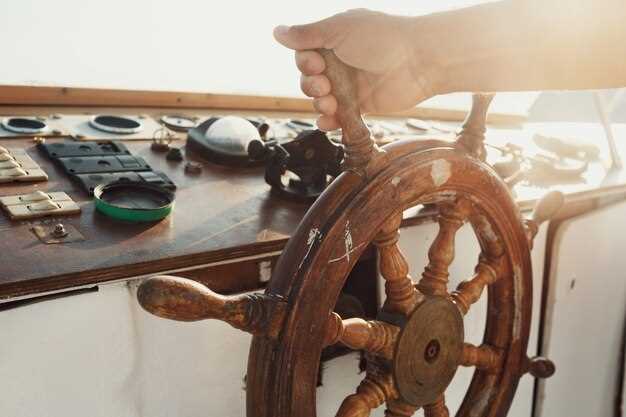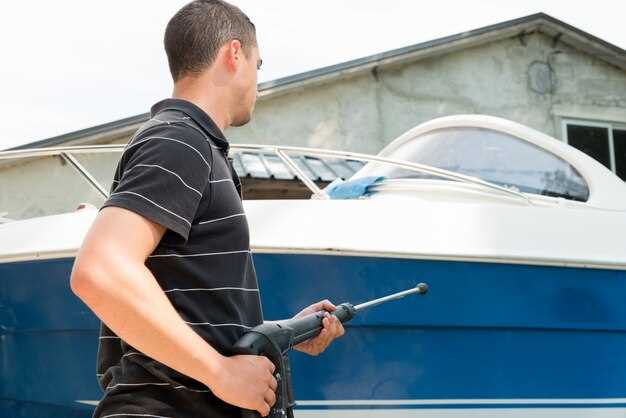How to inspect a used boat before purchase

Purchasing a used boat can be a thrilling adventure, but it comes with its own set of challenges. Many potential buyers are often tempted by the allure of a great deal, but not thoroughly inspecting the boat can lead to unforeseen complications and hefty repair costs. Understanding how to assess a used boat properly is essential for making an informed decision that suits both your needs and your budget.
When evaluating boats, the condition of the hull is of utmost importance. Look for signs of wear, cracks, or blisters that could indicate potential structural damage. Furthermore, examining the engine and mechanical systems thoroughly can save you from future headaches. Ignoring these crucial aspects could mean investing in a vessel that requires more work than it is worth.
In addition to physical inspections, it’s wise to gather the boat’s history. Knowing if it has been well-maintained and whether it has faced any major accidents will provide insight into its reliability. Taking the time to conduct a thorough examination of a used boat not only enhances your purchasing experience but also ensures that you sail away with a vessel that you can truly enjoy.
Key Structural Components to Examine in a Used Boat

When inspecting a used boat, it is critical to thoroughly evaluate its structural integrity, as this can significantly impact both performance and safety. Here are the key components to focus on during your inspection:
Hull: The hull is the foundation of any boat. Look for signs of cracks, blisters, or significant scratches that may indicate damage. Pay special attention to the areas below the waterline, as these can be prone to unseen issues. A solid, well-maintained hull is essential for the longevity of the boat.
Transom: The transom supports the boat’s engine and absorbs a lot of stress. Inspect it for rotting wood or signs of water intrusion. A weak transom can lead to serious performance issues and may require costly repairs.
Deck: Examine the deck for soft spots or mold, which can suggest water damage. Ensure that all fittings are secure and check for any signs of delamination. A sturdy deck is vital for both safety and usability while on the water.
Stringers and Bulkheads: These structural components provide essential support and rigidity. Inspect stringers for signs of rot and ensure bulkheads are intact. Weak or damaged stringers can compromise the entire structure of the boat.
Keel: The keel’s condition is critical for the stability and steering of the boat. Look for any signs of damage, such as cracks or bends. A compromised keel can lead to poor handling and even capsizing in rough waters.
Fasteners and Hardware: Examine all screws, bolts, and fittings for corrosion or rust. Ensure that these components are secure, as they play a vital role in the overall structural integrity of the boat.
By focusing on these key structural components during your boat inspection, you can make a more informed decision and ensure that your investment is sound. Knowledge of these elements will help you identify any potential issues and assess the overall health of the used boat.
How to Evaluate the Boat’s Engine and Mechanical Systems
When inspecting a used boat, the condition of the engine and mechanical systems is paramount. Start by checking the engine’s overall appearance. Look for signs of corrosion, leaks, or rust. A well-maintained engine should be clean, with no oily residue or excessive grime.
Next, examine the engine hours. This can provide insight into how much the boat has been used. An engine with lower hours is typically less worn, but it’s crucial to consider how those hours were accrued. Heavy use in harsh conditions can lead to more wear than moderate use in calm waters.
Conduct a compression test to assess the engine’s health. A well-functioning engine should exhibit consistent compression across all cylinders. Significant discrepancies may indicate internal problems.
Inspect the cooling system. Ensure that the water intake is clear and that there’s no blockage. A malfunctioning cooling system can lead to overheating, which is detrimental to engine longevity. Check the condition of the thermostat, water pump, and hoses for signs of wear.
Examine the fuel system, including the fuel lines, filters, and tank. Look for signs of leaks or corrosion. Old fuel can also cause starting issues and damage the engine. Make sure that the fuel is fresh and inspect for any debris or water in the tank.
Review the steering and propulsion systems. Test the steering responsiveness and inspect the cables and linkages for wear or corrosion. If the boat is equipped with an outboard motor, check the propeller for damage and ensure that it spins freely. If it’s an inboard vessel, inspect the shaft and bearings for noise or excessive play when rotated.
Finally, take note of any accessories that might impact the boat’s performance, such as the battery and electrical systems. Make sure the battery is properly charged and the connections are clean and secure. Inspect the wiring for any signs of fraying or wear.
By thoroughly evaluating the boat’s engine and mechanical systems, you can ensure a sound investment and enjoy your time on the water with confidence.
Assessing the Boat’s Overall Condition and Maintenance History

When inspecting a used boat, evaluating its overall condition and maintenance history is crucial for making an informed purchase decision. Start by examining the hull for any signs of damage, such as cracks, blisters, or fresh repairs. A clean, well-maintained hull suggests the boat has been cared for, while noticeable wear can indicate a history of neglect.
Next, assess the interior for signs of water damage or mold. Check for discoloration on the upholstery, which may indicate leaks or poor ventilation. Look at the condition of the electronics and systems, including the engine, steering, and navigation equipment. Functional systems are a good indicator of regular maintenance.
Request the maintenance records from the seller. A detailed history showing regular service intervals, inspections, and repairs will help reveal how well the boat has been maintained. Pay special attention to any major repairs, such as engine replacements or structural work, as these may impact the boat’s future reliability.
It’s also beneficial to verify any warranties or service contracts that may still be in effect. These can provide an added layer of assurance regarding the boat’s current condition. If possible, enlist a marine surveyor to perform a thorough inspection. Their expertise can uncover potential issues that you might overlook, ensuring that you are fully aware of the boat’s condition before committing to a purchase.




